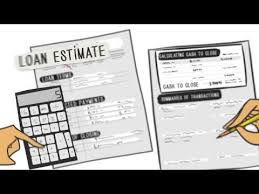 Our firm is often called on to assist homeowners whose properties may be in foreclosure. This can occur when a person falls behind in their mortgage payments to a bank or other lending institution. Because of the high volume of such foreclosures in New York State over the past several years, additional safeguards have been added to the judicial process to protect people from losing their primary residence in a foreclosure case.
Our firm is often called on to assist homeowners whose properties may be in foreclosure. This can occur when a person falls behind in their mortgage payments to a bank or other lending institution. Because of the high volume of such foreclosures in New York State over the past several years, additional safeguards have been added to the judicial process to protect people from losing their primary residence in a foreclosure case.
Prior blog posts have explained how New York State requires a mandatory settlement conference in most residential foreclosure matters. The main exceptions are cases involving a reverse mortgage, or situations in which the homeowner does not reside at the property being foreclosed, such as a second home or vacation house. Our attorneys will attend settlement conferences in Court to attempt to resolve outstanding foreclosures. Court referees, who meet with the parties in an attempt to resolve these cases, encourage lending institutions to offer mortgage modifications. The first step in the process is that the borrower must provide complete financial information to the lender (or, in most cases, their attorneys). This information usually consists of a standard Request for Mortgage Modification Form (RMA), copies of state and federal tax returns for the last several years, a hardship letter from the borrower explaining why they fell behind on their mortgage, proof of income, bank statements, and other financial records as the lender may request.
Once this information is provided, the lending institution will consider whether a modification is possible. Based on the borrower’s income and assets, as well as the value of the property in question, as well as the mortgage amount, the lender may offer a trial modification. The trial modification may reduce the interest rate on the original mortgage, and may also shift the past due payments to the end of the loan term, allowing a delinquent borrower to resume payments and have the property removed from the foreclosure process. In certain instances, the lender may even reduce the actual amount of principal owed on the mortgage.
 New York Real Estate Lawyers Blog
New York Real Estate Lawyers Blog






 With the prevalent use of the internet, grievances against cooperative and condominium boards can spread like wildfire. The means used may be standard e-mail forwarded to all unit owners, a specifically developed Facebook or Google chat page, a publically accessible website, or another type of private intranet system.
With the prevalent use of the internet, grievances against cooperative and condominium boards can spread like wildfire. The means used may be standard e-mail forwarded to all unit owners, a specifically developed Facebook or Google chat page, a publically accessible website, or another type of private intranet system. 
 As many of us know, insurance carriers are most profitable when they collect premiums and resist paying claims. Some of
As many of us know, insurance carriers are most profitable when they collect premiums and resist paying claims. Some of 
 As stated in a
As stated in a